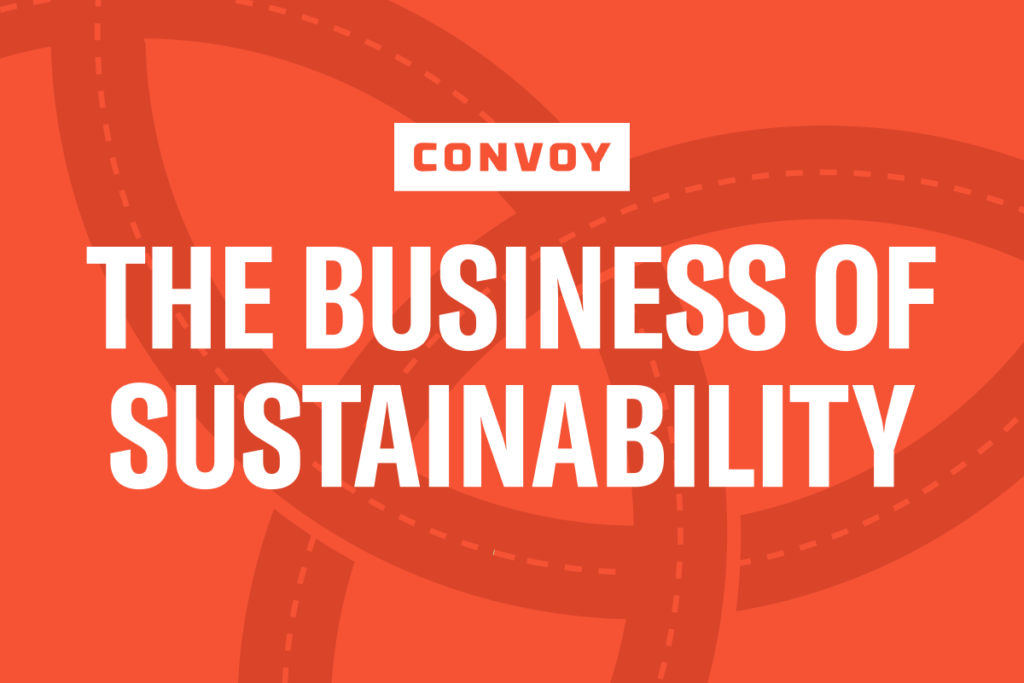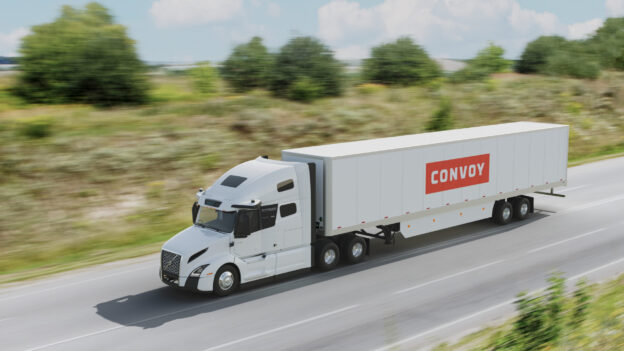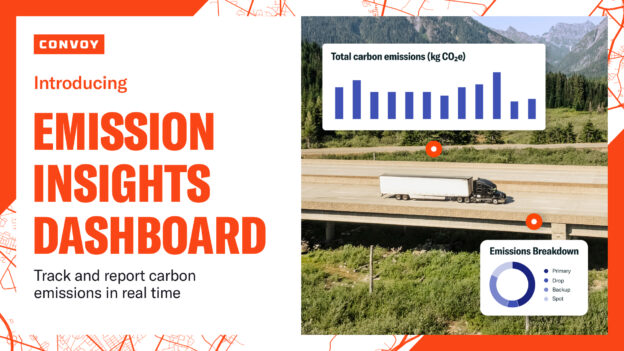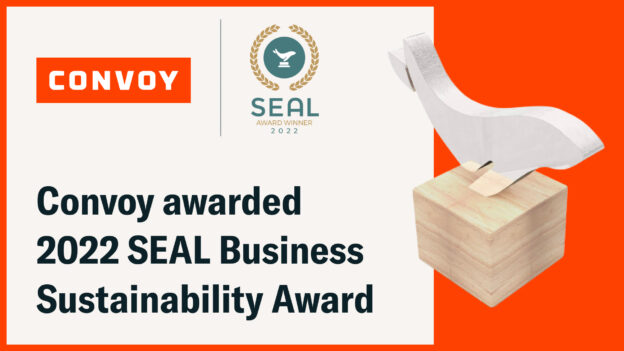How Companies Are Making Their Products More Sustainable
Sustainability • Published on March 23, 2021
So many companies today prefer to maintain the status quo in terms of product design and operations. “If it ain’t broke, don’t fix it” is often the mentality in boardrooms, where the pursuit of profit is often more important than the purpose of sustainability.
Through many conversations in our Business of Sustainability interview series, I’ve come across innovators and disruptors who are all about changing the status quo and working to design products, packaging, and even business operations with a focus on being more sustainable. And while the path to creating more sustainable products may not have been an easy one, their purpose-driven pursuit is undoubtedly finding success amongst consumers.

Here is a look at 18 companies who are doing things differently.
1. Walmart is improving the manufacturing and sourcing of its products. Zach Freeze, the Senior Director, Strategic Initiatives, Sustainability, reports, “We’re doing a lot of great work to improve the manufacturing and sourcing of our products, including things like working very hard to improve the recyclability of packaging. Walmart is challenging and working with our supplier partners on improving the ingredients, the way things are made and sourced, and even the store itself. We have moved to extremely energy efficient lighting in stores and this is an example of how we are constantly looking at how we can improve our business.”
2. Miir is choosing not to produce or sell bottled water by creating insulated, reusable bottles. Bryan Pape, CEO, notes, “Miir is making a product that is reusable by its nature. And just because we’re making something that’s reusable, doesn’t mean there isn’t an environmental impact. Everything we consume in the world is either grown or mined. So, iron ore has to be mined out of the earth to make a durable product. There’s an impact there on the environment. Everything has to be shipped, so there is carbon emissions through shipping. We’re working on reducing all of our plastic packaging so we’ve moved entirely from a plastic-based poly liner to one which is basically compostable to protect the product from being scratched during transit of the package. We do have compostable liners holding the product inside of the box and we are almost there to completely eliminate any sort of poly bag to protect that product. We are trying to think holistically about sustainability, not just the end product, but also what is on the product between transfer of the goods.”
3. The Ardagh Group is focused on using less energy to acquire its core materials. Ardagh Group is a leading supplier of infinitely recyclable, metal and glass packaging. John Sadlier, Chief Sustainability Officer says, “Recycling glass, recycling aluminum, and purchasing aluminum with high recycled content — it has been a constant approach to use less energy to drive value for our business. Additionally, any of the glass or aluminum products where we extract materials through mining, etc. is all done very responsibly.”
4. HSBC Works To Bring Financing To Sustainably Minded Companies. Kelly Fisher, SVP/Head of Corporate Sustainability, reports “For HSBC, sustainable finance is finding innovative ways to ensure our clients are supported as they transition their businesses to have less of an impact on the world. A lot of things can’t happen unless there is financing for it. If you’re a major shoe company, for example, and you know you can change the way you manufacture one of your shoes and make it from recycled materials, that’s great. The impulse to want to do that is the right thing, but if you don’t have the funding in the company right now to do that, a loan from a bank who believes it needs to happen, can make it happen.”
5. Six Senses Hotels Resorts and Spas Turns Sustainability Into A Guest Experience Opportunity. Jeff Smith, Vice President of Sustainability notes, “Part of our aim is to capture our guests’ interests and that’s actually a great opportunity when they are on vacation with their minds relaxed and open to new ideas. They ask ‘what are you doing with your glass bottles back there?’, and we actually do workshops around this so we invite them to come and learn what we do with our glass bottles. At one property we crush our bottles and make new things. We do upcycling at our resorts and we like to involve guests in that. Some guests arrive not knowing what we do, but ideally every guest leaves being aware of what we’re doing to ensure that their stay has been the lowest impact possible. We are in an industry of providing experiences, so we try to draw it all together and hopefully we’ve inspired them to live a slightly more sustainable lifestyle when they go on with their lives back home.”
6. Guayaki Yerba Mate Focuses On A Sustainable Product And Responsible Delivery Vehicles. Gretchen Grani, Regeneration & Sustainability Lead reports, “When we began, we focused on building relationships with indigenous stewards of the indigenous rainforest and bringing the yerba mate which grows natively in their territory to market. Since then, we have focused on sustainable development of those territories. About five years ago we also merged with our distribution company and have a fleet of mostly electric vehicles as well as 30 warehouses and offices to manage. So now our effort incorporates fleets and facilities, renewable energy, and waste programs. We also started a relationship with an anti-recidivism coalition and were able to hire formerly incarcerated individuals for the distribution company. Additionally, we formed a relationship with General Motors and worked with them to innovate a cargo version of the Chevy Bolt for delivery.”
7. IKEA Makes Mobility More Sustainable For Products, Customers, and Employees. Angela Hultberg, Head of Sustainable Mobility, says, “My job is to make sure everything that moves, moves in a sustainable way. It encompasses last mile deliveries, getting 170,000 employees to work every day, and customer travel.”
8. Numi Organic Tea Switched To Plant-Based Packaging. Jane Franch, Director, Strategic Sourcing & Sustainability notes, “The switch to plant-based packaging has enabled us to displace 13.3 metric tons of single use plastic from our material stream.”
9. Rumpl Has A New Take On An Old Product. Wylie Robinson, CEO, admitted “We realized blankets are some of the oldest textiles ever. And despite them being so old, really very little material innovation has taken place in this category. Most blankets are cotton, wool, or some sort of low-tech material. Meanwhile, we’ve seen this big performance textile revolution in sporting goods and athletic equipment. We’ve seen the emergence of the athleisure category — a billion-dollar category with technical materials for everyday use. And all of that technology is perfectly suited for this blanket category. So we are literally just drafting off the technologies we saw developed for apparel and applied them to this everyday blanket.”
10. Stitch Fix Strives To Make Sustainable Decisions With Suppliers And Materials: Thomas Heckroth, Director of Strategic & Responsible Sourcing, focuses on “Where do we have the most influence and where do we have the most control? We know we can decide who we work with for a factory base, for our private label work. We know we have pretty good control over what decisions we can make as far as what materials we use and the packaging we actually decide to use. All those things are decisions that we control. And so, that’s where we’ve focused our initial work.”
11. Credo Beauty Works To Utilize More Sustainable Ingredients And Packaging: Mia Davis, Director of Environmental and Social Responsibility, says, “We know there are over 100 billion cosmetic packages created annually and such a small fraction of them are used as refills. One of Credo’s biggest initiatives currently is in establishing sustainable packaging guidelines by addressing primarily ingredients and products. We recognize our role in this consumption and waste problem, and here is what we’re going to do to start to ameliorate or lessen our impact. We are working really hard to partner with packaging suppliers and brands to do things really differently in an innovative way to get more sustainable packaging into the hands of smaller companies.”
12. Aether Beauty Redefined Its Packaging Standards: Tiila Abbitt, Founder & CEO, challenges companies to “Question everything that goes into both your product AND the packaging. While you might be focused on the ingredients which go into the product being safer, cleaner, greener, etc., most companies never look at their packaging through the same lens. You might be surprised to learn that some materials in your product’s packaging simply don’t break down and end up in a landfill. Also, talk to your end-user consumer. For example, we learned makeup artists didn’t want mirrors and magnetic closures in makeup palettes because it made them much heavier to carry around. From a sustainability perspective, the ingredients used to create a magnet contribute to rare Earth mining which means terrible human conditions to mine those ingredients and they ultimately do not break down in a landfill. Consider if every item in your product from ingredients to labeling to packaging is biodegradable. Look at all of the raw materials including films, inks, closures, and absolutely every aspect of everything in your product and its packaging.
13. Fair Trade USA Ensures Products Which Bear Its Certification Do The Right Thing In Terms Of Ingredients, Wages, And Health And Safety: Amy Blyth, Director, Program Development and Partnerships, reports, “For those to be certified as ‘fair trade,’ the farm, fishery, or factory must be certified under Fair Trade USA’s respective producer standards, which include wages and benefits, health and safety, and all of the things which ensure those workplaces provide decent working conditions, safe standards, provide legally required benefits, etc.
14. Samsonite Works To Keep Its Luggage Out Of Landfills: Christine Riley Miller, Global Director of Sustainability, says “As the largest manufacturer and distributor of lifestyle bags and travel luggage brands, we look at product innovation and material sourcing through the lens of sustainability. How do we design for repairability and durability? How do we design for recyclability? Our product designers are constantly sharing innovative ideas around how we increase the durability and repairability of our products.
15. Free People Supports Nature: Julie Verdugo, Director of Sustainability + Social Impact notes, “It was very authentic for us to start thinking of Mother Nature through the lens of how we experience nature. That led to us experimenting with a lot more natural fabrics and fibers like linen and euro line which is traceable to the farms in France we work with. And then protecting animal rights and bringing in the vegan leathers and alternative options for that so we bring our values into the products themselves.”
16. Grove Collaborative Will Not Sell Products That Don’t Have A Sustainability Offering: Danielle Jezienicki, Director of Sustainability points out that “Everything that you see on the site, whether it’s a Grove-made product from one of our own brands or one of our third-party brand partners, has sustainability baked into the offering. Whether it’s clean beauty or something made by Seventh Generation for example, Grove products are really designed with waste reduction in mind to be plastic free and to help you reduce your carbon footprint at home.”
17. Cotopaxi Created A Product Line Using Fabric Remnants: Annie Agle, Senior Director, Corporate Social Responsibility shared, “We want to look for ways where we as a company can fill a sustainability challenge no one else could. Our Del Día line uses remnant scraps. This was done in conjunction with a supplier who was sitting on all of its remnant materials from other outdoor brands like Patagonia and Camelback. It really became part of this more circular mindset where we can say, “Well, we can do something unique. Let’s learn how to design a backpack using scraps. No one’s done that before.”
18. Waiākea Hawaiian Volcanic Water Uses Sustainable Packaging And Gives Water To Those In Need For Every Liter Sold: Ryan Emmons, Co-Founder & CEO is committed to using 100% rPET, 100% of recycled materials in all of their packaging. “This gives us a 90% smaller carbon footprint, water footprint, and energy footprint than competitors. We’re also launching aluminum and glass lines and we’ll be launching those alongside the launch of our own technology which is called Oceanplast, which is the first packaging of its kind where we are taking post recycled plaster material and converting it into wax. We are removing 99% of possible microplastics and it’s fully recyclable. So, our goal is really to have every sustainable type of packaging.” Additionally, for every liter of Waiākea sold, the company donates 650 liters to rural communities in need in Africa and throughout the world.



